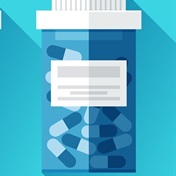The overdose death of pop star Michael Jackson drew new attention to the abuse of prescription drugs, not just in US, but worldwide. And with that attention has come acknowledgment that it's become a widespread phenomenon.
In the US one of every five teenagers and adults -- about 50 million Americans -- have used prescription drugs for a non-medical purpose at some point in their lives, according to the most recent National Survey on Drug Use and Health.
And prescription drug abuse appears to be growing among young adults. The national survey, conducted in 2007, found that abuse of prescription pain relievers by young adults rose 12% between 2006 and 2007, even as their use of street drugs such as cocaine and methamphetamine decreased.
Experts believe that prescription drug abuse is on the rise in part because access to these medications has become easy and routine. The number of prescriptions filled in the United States increased 72% between 1997 and 2007, though the population grew just 11% in that decade, according to research by the Henry J. Kaiser Family Foundation.
"Some of it we think relates to the general availability of prescription drugs in medicine cabinets and to the public," said Dr Wilson Compton, director of the Division of Epidemiology, Services and Prevention Research at the US National Institute on Drug Abuse. "As these medications are in medicine cabinets in many more houses across the country, that is a key part in this."
Prescription drugs seen as 'safe'
People also appear to feel more comfortable taking prescription drugs because they mistakenly believe they will be safer than street drugs, Compton added.
"We have people who tell us that, and that would be a very dangerous assumption," Compton said. "Somebody can overdose on a prescription drug because it wasn't made for them. What would be safe for one individual could be lethal to another individual."
Three types of prescription drugs are being abused most often, officials say:
- Painkillers. Drugs such as codeine, oxycodone and morphine are often prescribed to relieve pain in people who have suffered trauma or illness or have undergone surgery.
- Sedatives. Valium, Librium and Xanax are among the medications often prescribed to treat anxiety or sleep disorders.
- Stimulants. Drugs such as Ritalin, Adderall and Dexedrine are prescribed as weight-loss aides or to treat narcolepsy or attention-deficit/hyperactivity disorder.
"The painkillers are the number one in terms of the prescription drugs that are abused," Compton said.
Drug-swopping a big problem
People who are abusing prescription drugs most often get them free from a friend or relative who obtained the drugs legitimately to treat a condition. The drug abusers help themselves to the leftovers, said Carmen Catizone, executive director of the National Association of Boards of Pharmacy.
"There's a lot of drug swapping or sharing occurring," Catizone said. About 56.5% of people who used illicit prescription drugs obtained them this way, according to the national survey.
Other abusers will convince their doctor to write prescriptions they don't need, Catizone said. About one-fifth of prescription drug abusers took this tack in obtaining their drugs, the survey found.
Still other abusers obtain prescription drugs from Internet pharmacy sites. Though it's currently a limited phenomenon, Catizone acknowledged that it has the potential to become a bigger problem.
"We've seen the Internet move from an entrepreneurial, Amazon.com-type of marketplace to a primary area for drug abuse," he said. "It's easier to obtain prescription drugs online than it is to buy crack or heroin on the street."
Officials hope to stem this tide through the use of prescription monitoring programmes, Catizone said. Every time people go to the pharmacy, their prescription information is entered into a database that pharmacists and physicians can use to track trends, watch for potential drug interactions and detect abuse.
Internet contributing to drug abuse
The government also is clamping down on Internet sales of drugs. The Ryan Haight Online Pharmacy Consumer Protection Act, which became federal law in 2008, requires valid prescriptions for medications sold online. Ryan Haight died in 2001 of a fatal overdose from prescription painkillers he bought from an online source with his parents' credit card when he was just 17, Catizone said.
People concerned that a friend or relative is abusing prescription drugs should look for the same sort of telltale signs used to detect any drug use, Compton said. They might often slur their words, or they might not make any sense when speaking.
"If the pills in your medicine cabinet are disappearing, that's another warning sign," he said.
"The signs of drug abuse can be very subtle, and people often hide their behaviour," Compton said. "It can be very advanced before you discover a person's behaviour." - (HealthDay News, December 2009)




 Publications
Publications
 Partners
Partners














